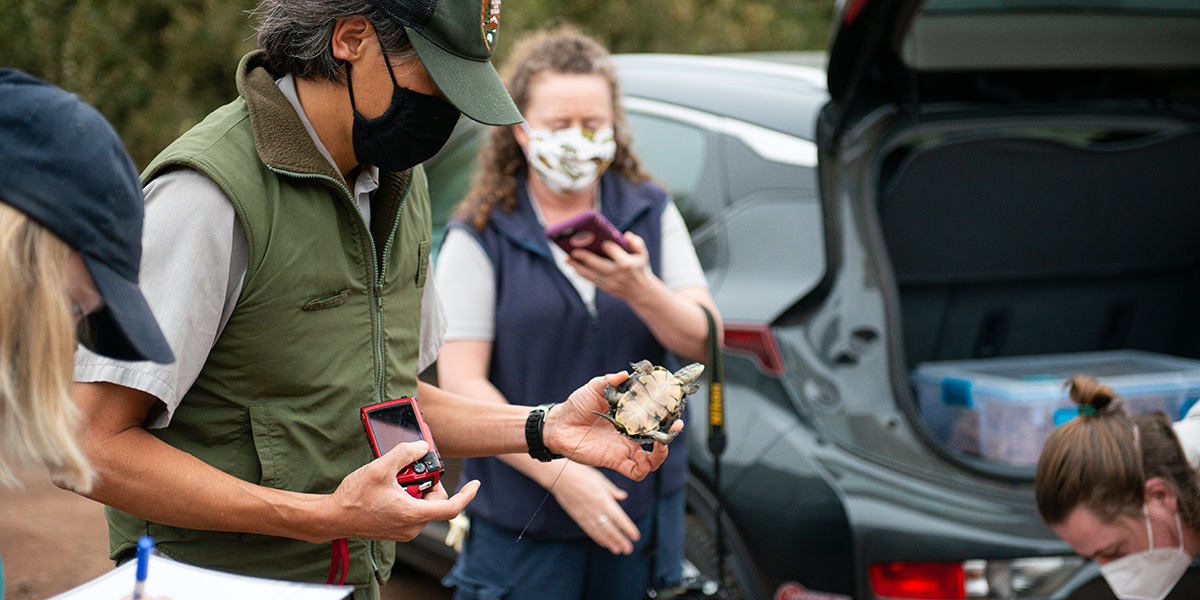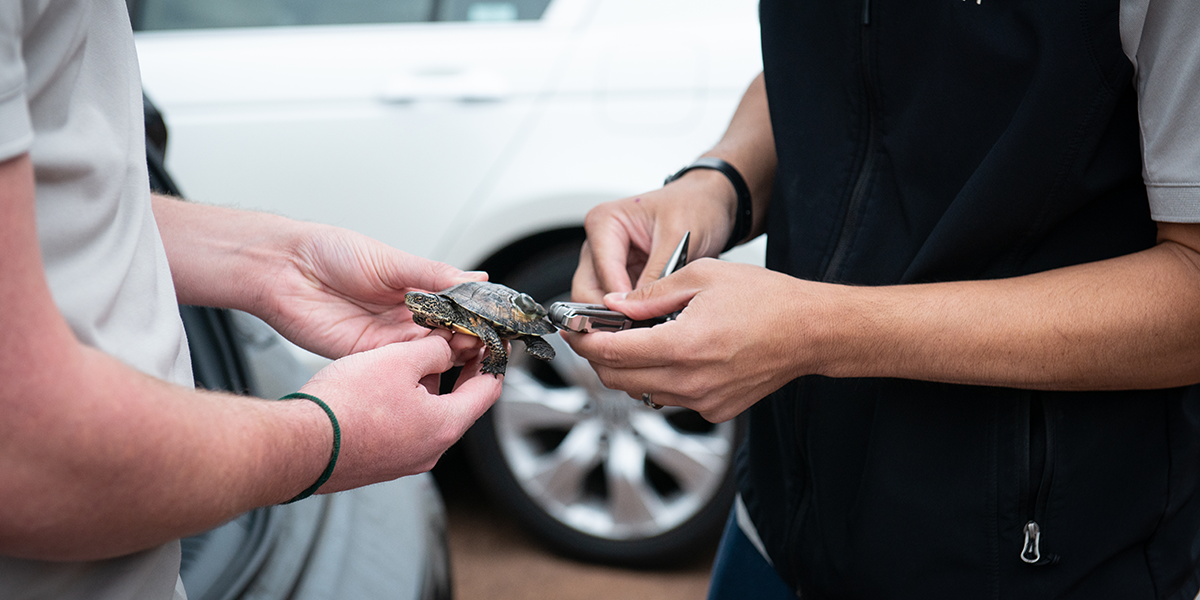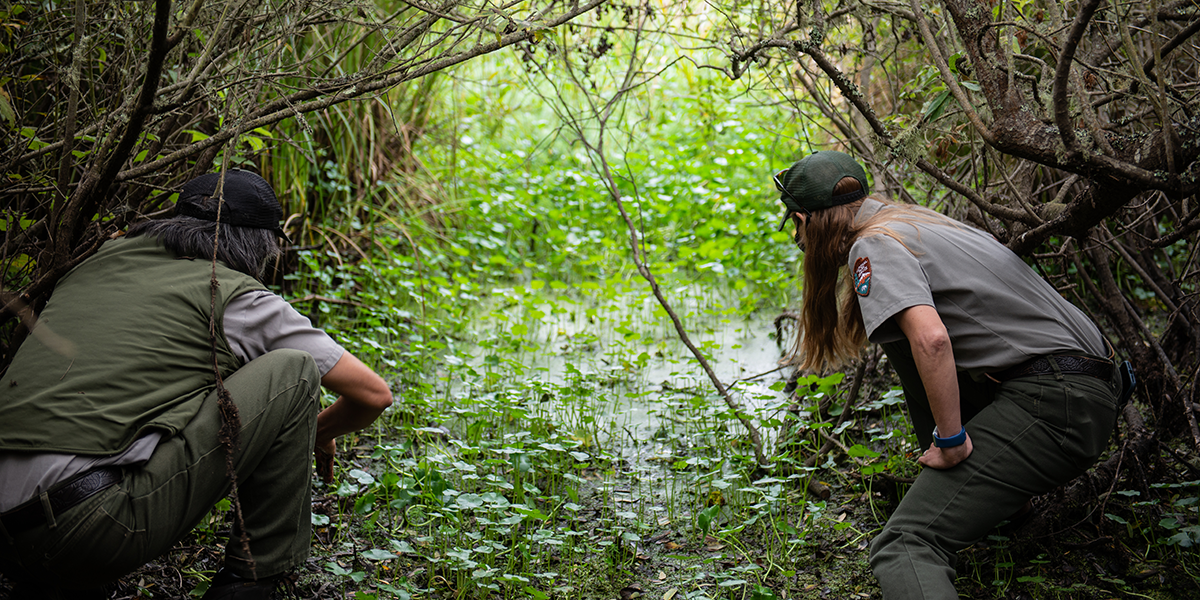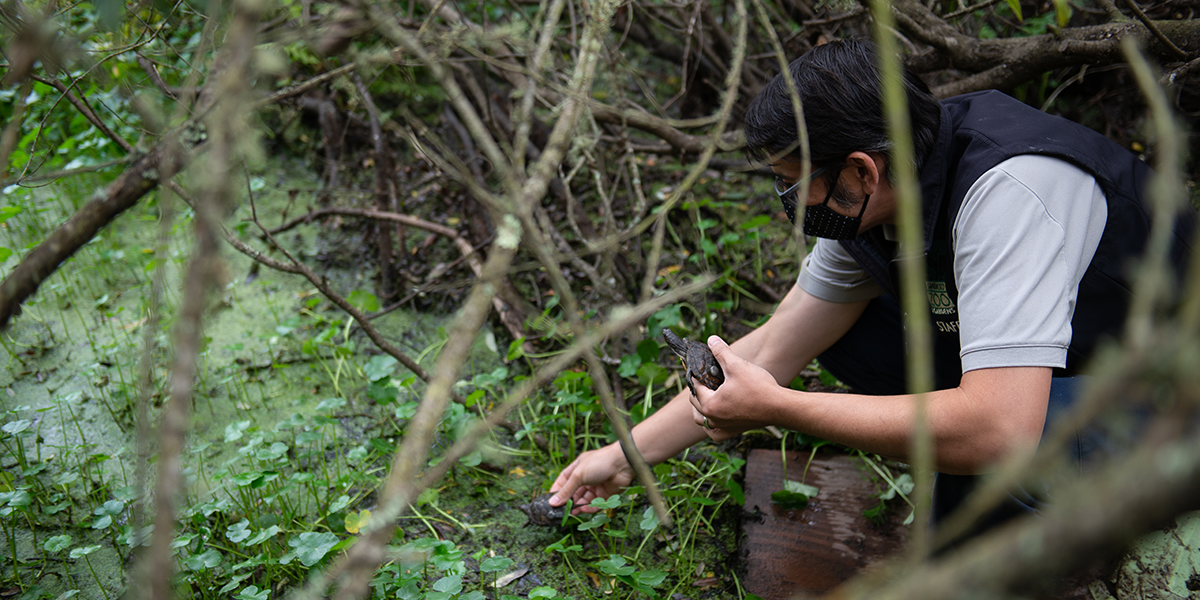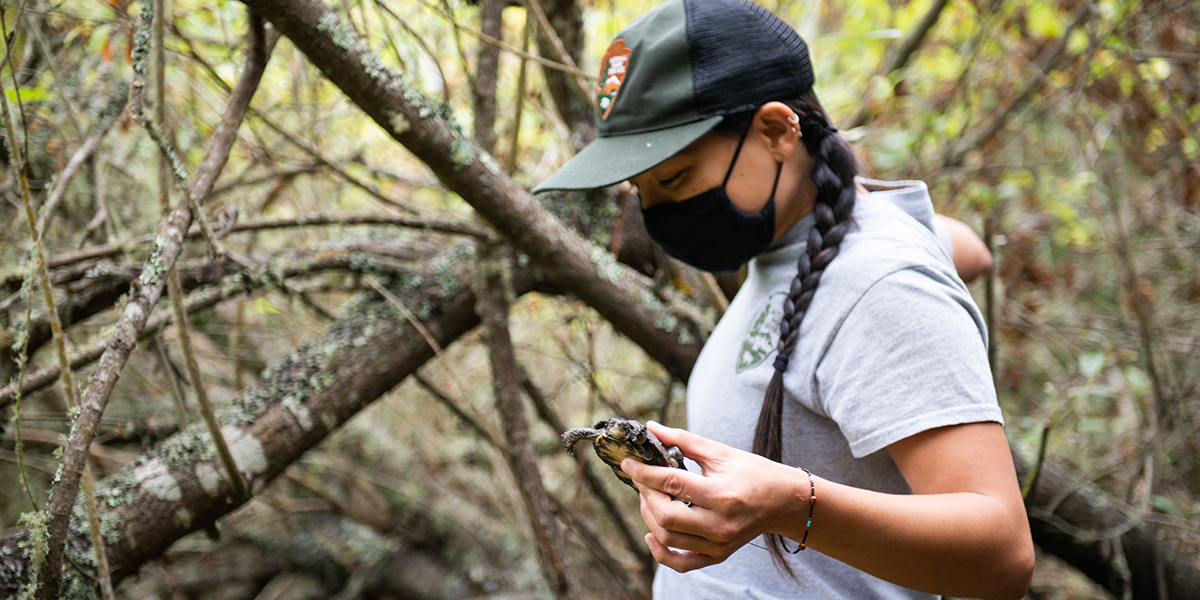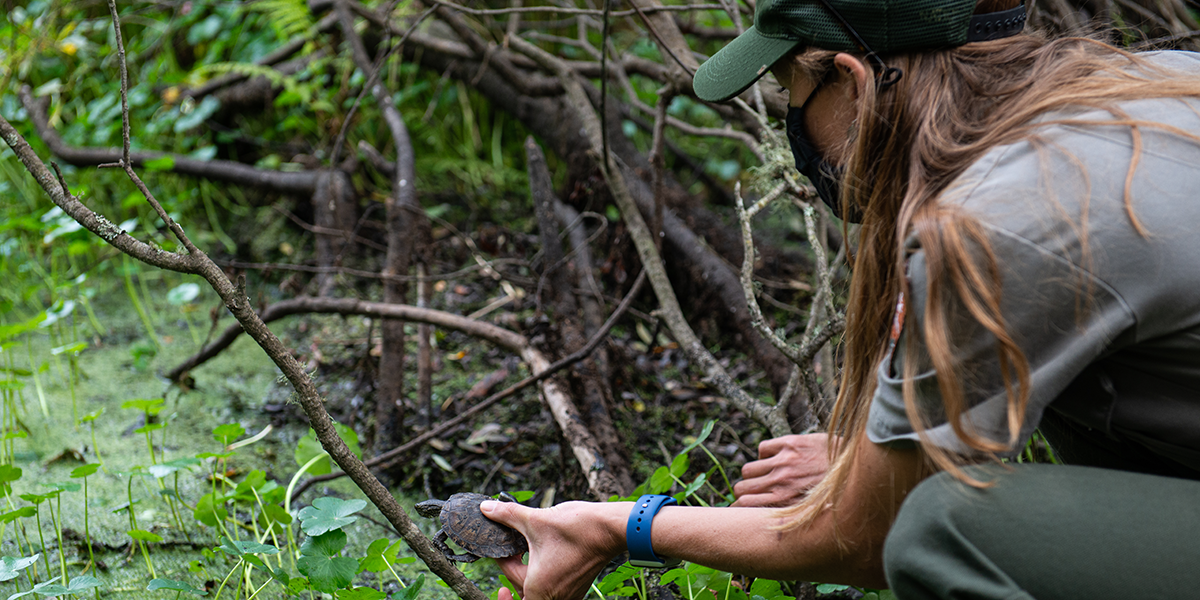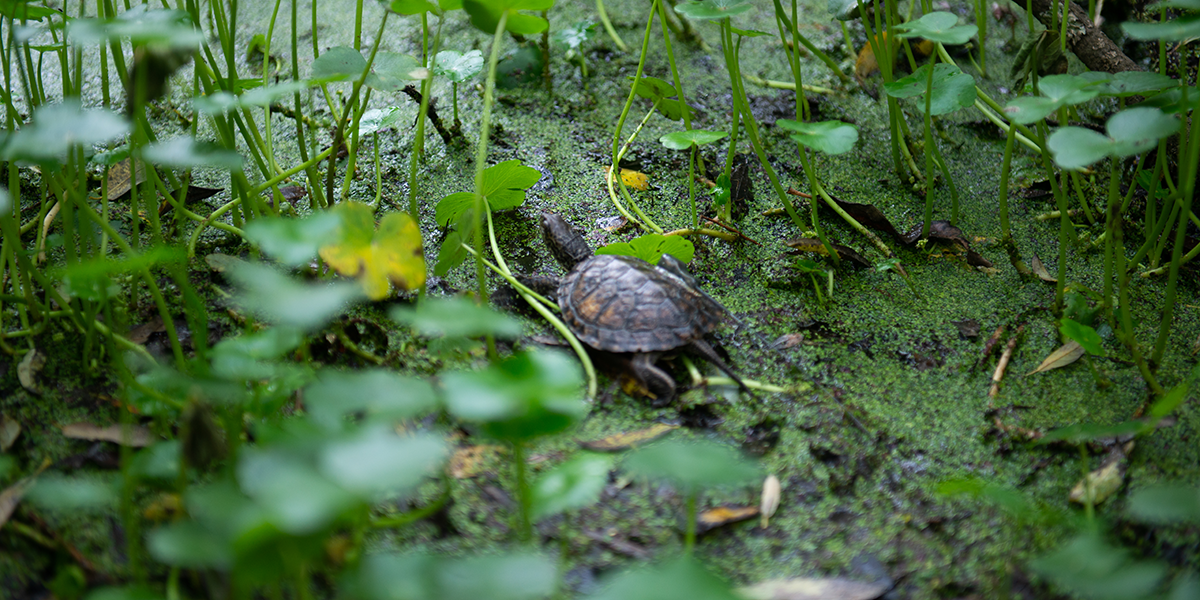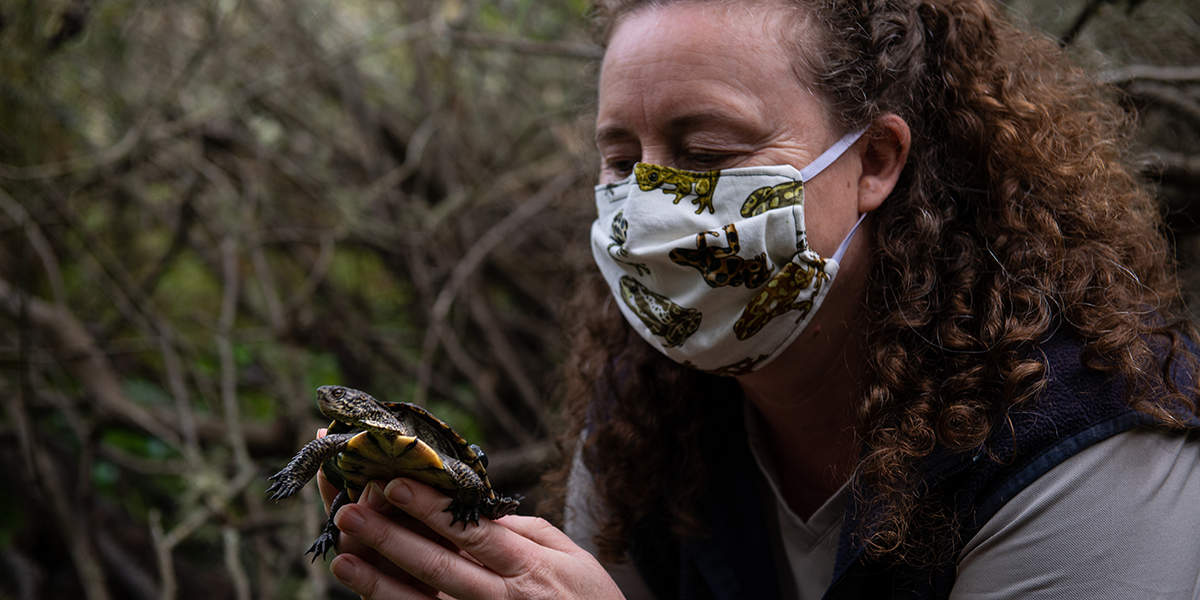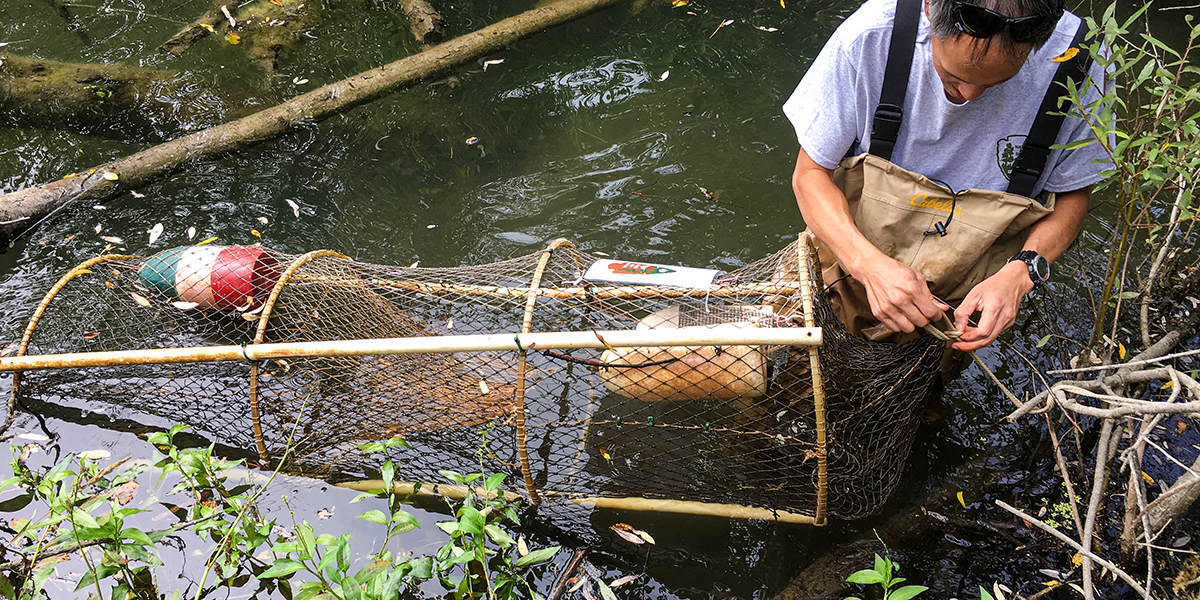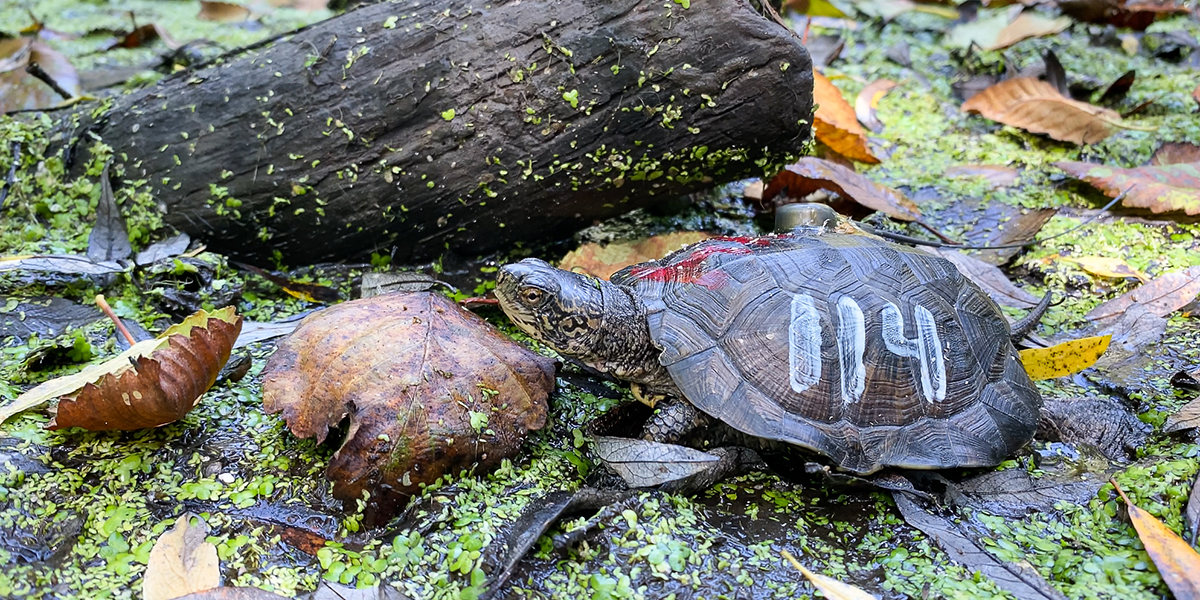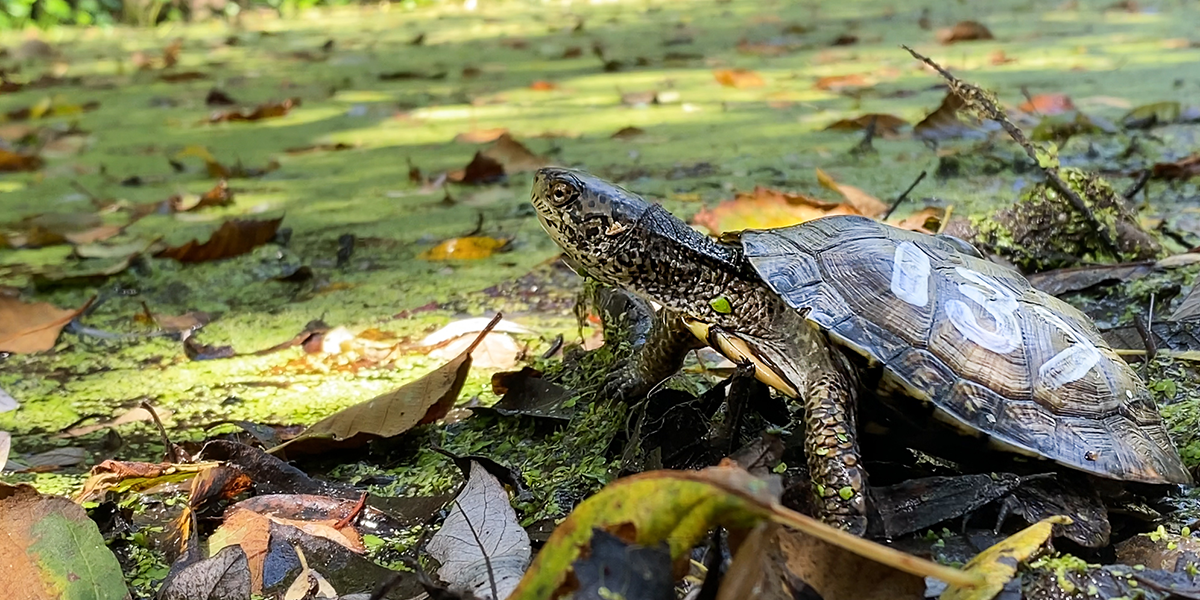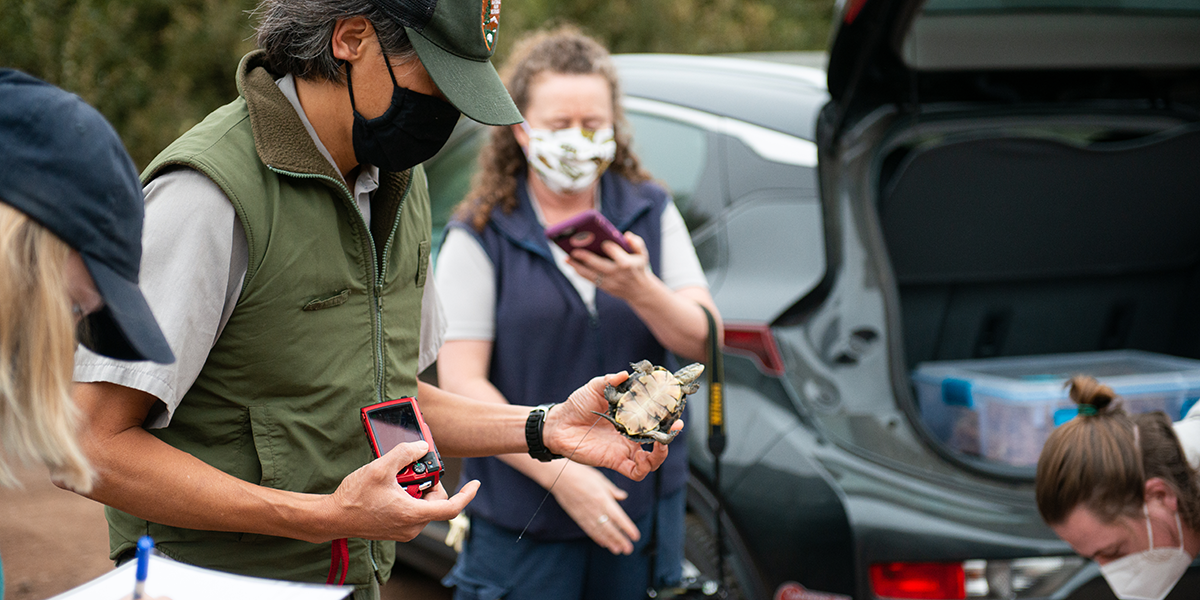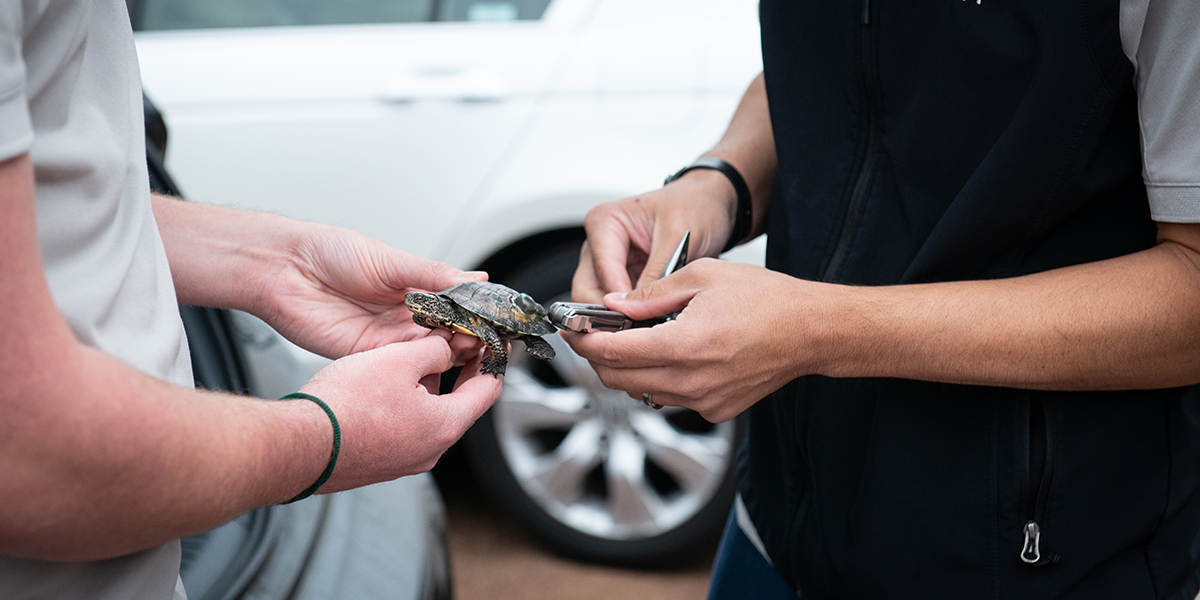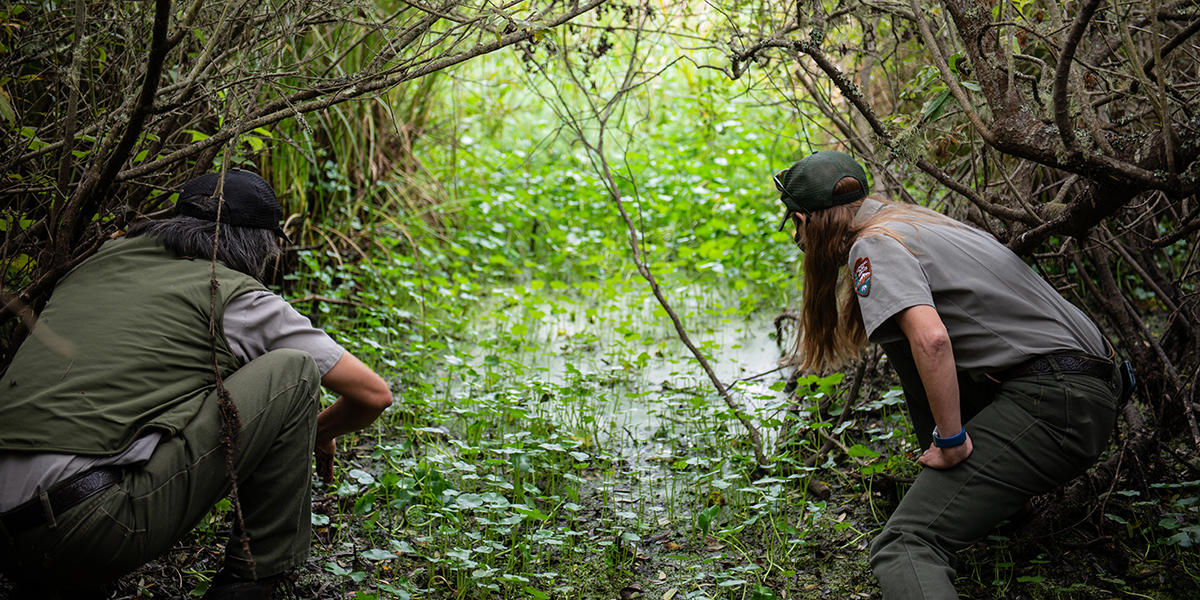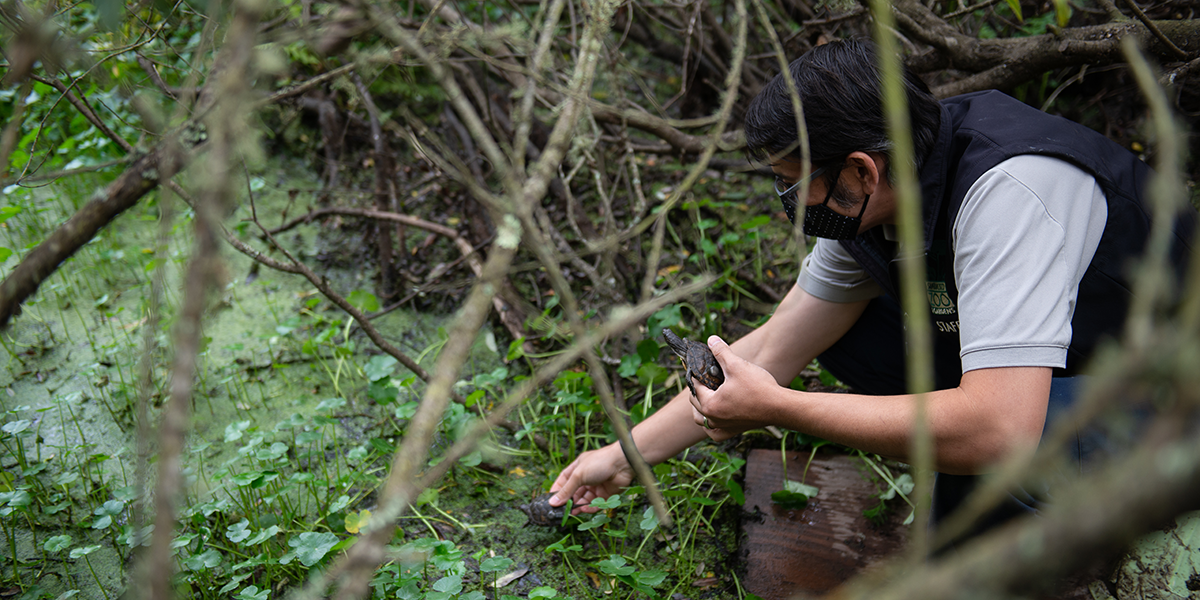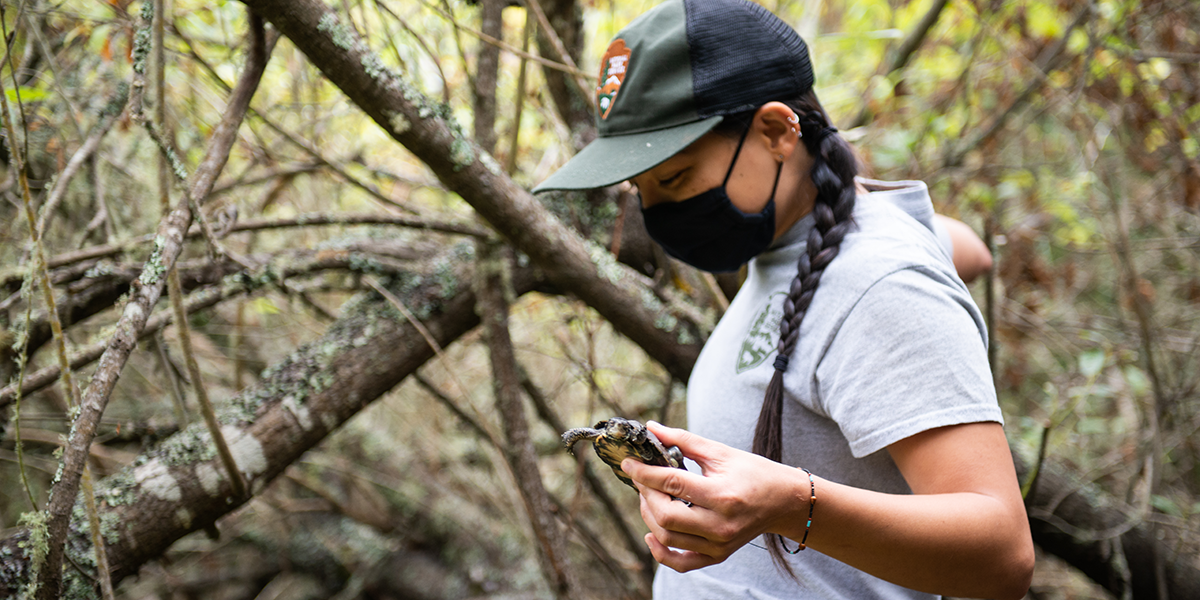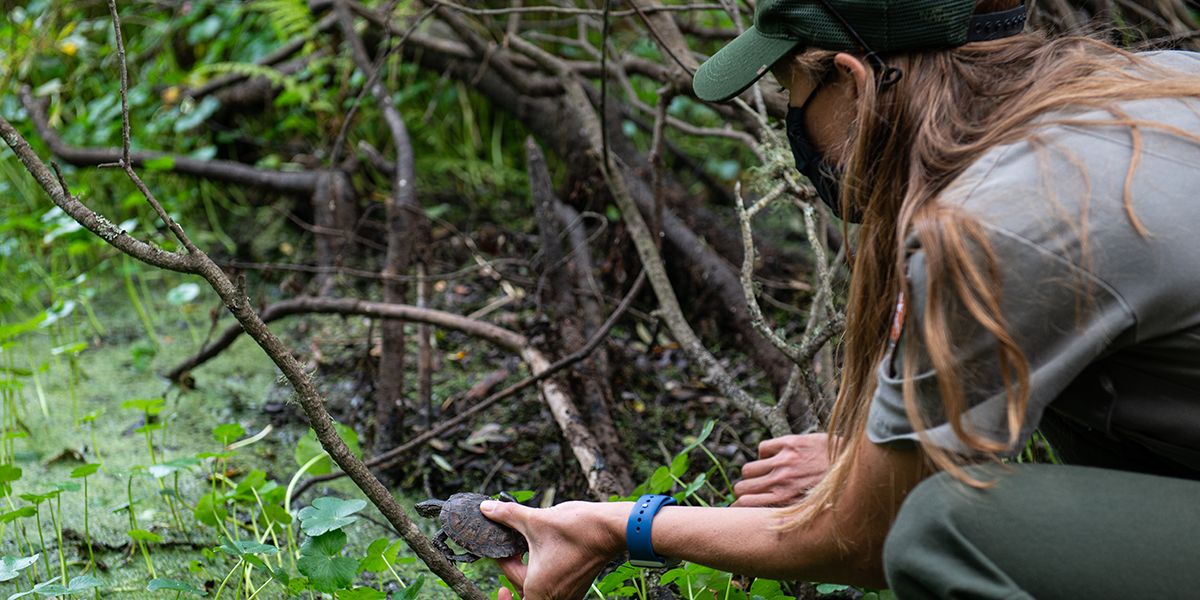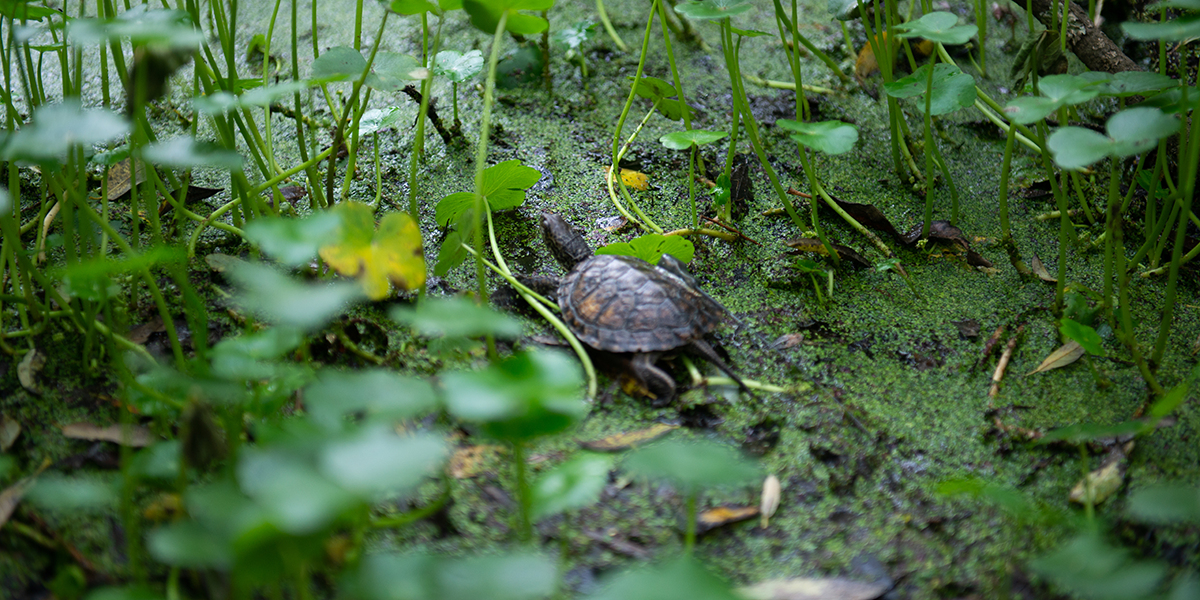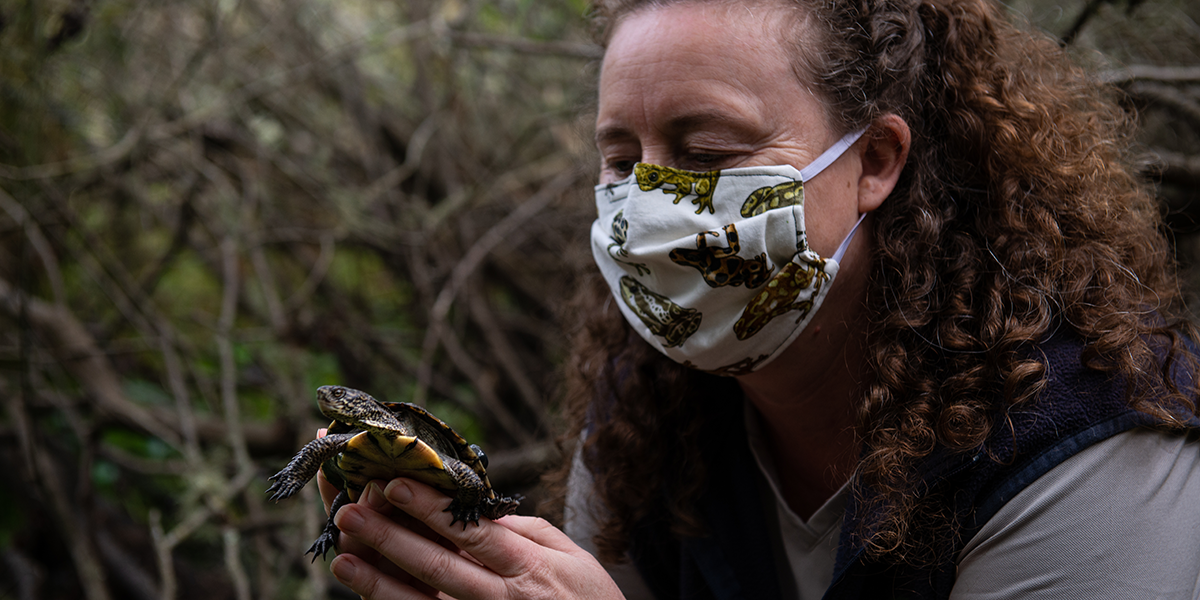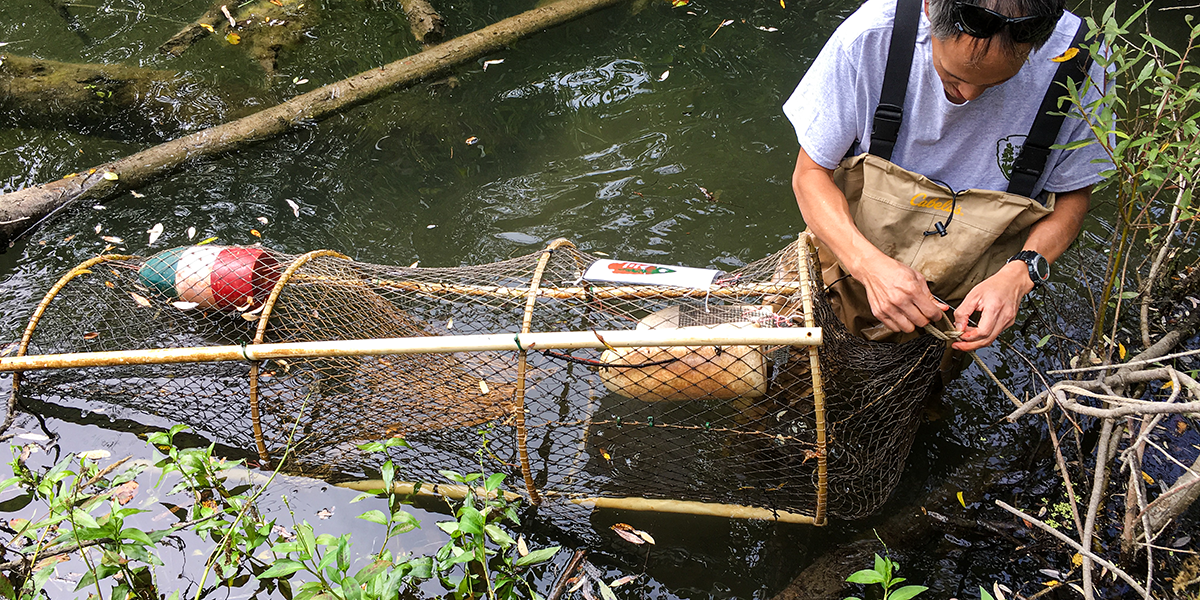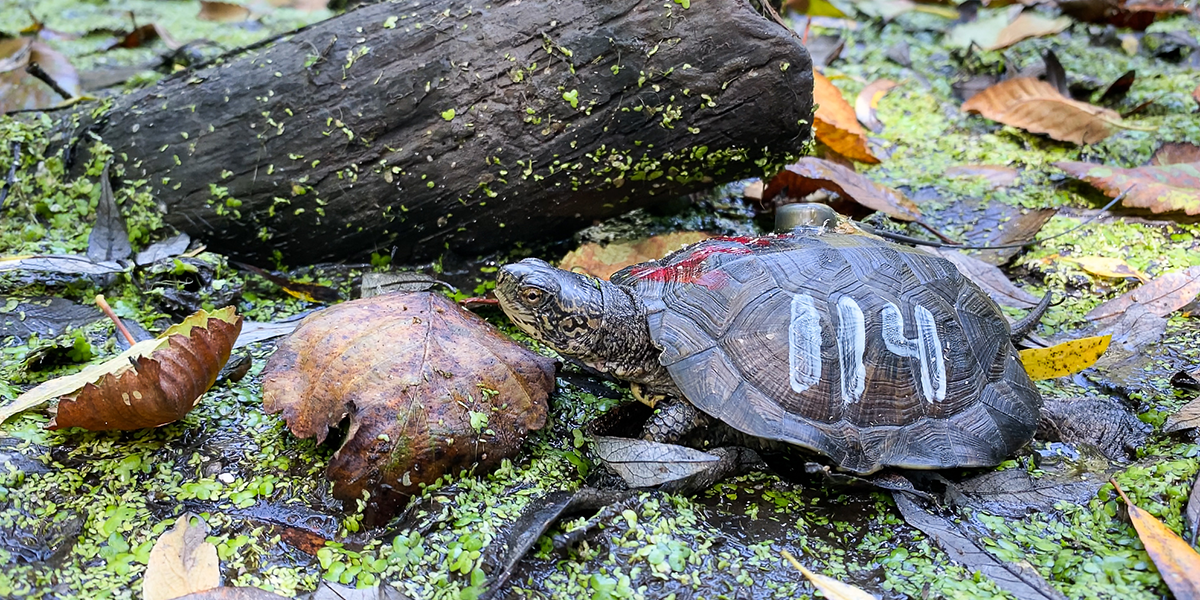Under a drifting blanket of fog, employees from the National Park Service (NPS) and San Francisco Zoo stood in a large circle at Rodeo Valley. All eyes were on a few special members of the group—34 western pond turtles nestled into a box of soft sphagnum moss. After two years of being raised at the zoo, these turtles were about to be released into the cattail-lined waters of the park.
The western pond turtle hasn’t been observed in the Rodeo Valley Watershed since 1998. This year, the fourth year of a five-year reintroduction plan, biologists reintroduced 20 turtles to Rodeo Valley and 14 to Redwood Creek Watershed. The project’s primary goal is to establish self-sustaining populations in the park’s watersheds where they previously occurred. Twenty turtles have already been released through the program in the Redwood Creek Watershed.
This reintroduction, called the “Head Start Project”, has been a team effort.
Darren Fong, an Aquatic Ecologist with the NPS at the Golden Gate National Recreation Area (GGNRA), said “I’ve been inspired by how well the previously released turtles have done in their new homes and by the dedication of the SF Zoo staff to rearing healthy turtles, efforts of Sonoma State students and Pt. Reyes park staff in finding turtle nests at the donor site, and of course, the dedication of our park interns who have been doing the monitoring—and have great stories about the turtles.”
The San Francisco Zoo raises the juvenile turtles for two years until they’re big enough to avoid predation. Another threat faced by western pond turtles are pet turtles released into the wild, most commonly an introduced species called the red-eared slider. These introduced pets can bring disease and out-compete native turtles for food. Any unwanted pet turtles should be taken to animal rescue instead of being released in the wild.
To track the western pond turtles’ movements post-release, GGNRA biologists attach nickel-sized transmitters with unique radio frequencies to their shells.
“Using a radio frequency receiver and antenna, we’re able to pinpoint where each turtle is based on the strength of the signal received from the transmitter. It’s just like scanning through radio channels in the car, each turtle has its own radio channel that we scan through during the survey,” said GGNRA biologist Gabi Dunn.
Another method for monitoring these turtles requires a more involved approach. After releasing this year’s juvenile turtles, Fong and Dunn geared up to check traps to find turtles released in previous years to evaluate their health and growth. This is part of the project’s yearly checkup that happens during a small window of time each summer.
“Being both aquatic and terrestrial living, turtles have this dual importance to the environment and can act as indicators of how healthy a system is,” said Dunn after watching the turtles swim off into their new natural habitat. “It’s just really inspiring to see that missing link back.”

